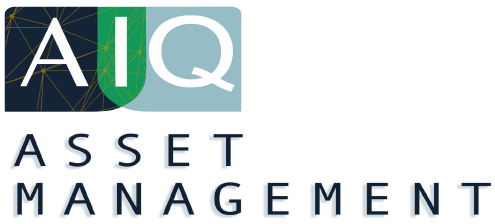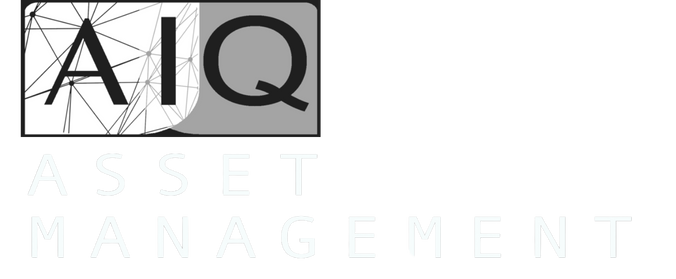March 2025 Commentary
1st Quarter 2025 Market Review and Current Outlook
Executive Summary
- First Quarter Review: Post-election market optimism faded due to a combination of factors, including the release of DeepSeek’s cost-effective R1 AI model in January, triggering a sell-off in large tech names, though the S&P 500 briefly hit a new high in February. Rising fears that new tariff policies will lead to slowing economic growth and reaccelerated inflation prompting a new round of profit-taking in high-performing sectors and a shift to defensive assets (Consumer Staples, Health Care, Treasuries) and international markets (Europe, China) in the second half of the quarter.
- Strategy Performance Highlights: AIQ’s strategies faced headwinds from the sentiment shift, underperforming due to their preference for quality growth stocks and the underweight positioning in international markets. Fixed income performance was mixed as the shorter duration profile (less interest rate risk) was a headwind given the strength in U.S. Treasuries, but the more conservative positioning from a risk standpoint was a positive.
- Markets Are Volatile: Recent events, including the “Liberation Day” selloff, escalating trade tensions with China and the EU, rising long-term interest rates (i.e., declines in U.S. Treasury prices), wider credit spreads (i.e., signs of increased credit risk), and negative economic revisions in the U.S., have fueled increased volatility (VIX spiked) with markets often trading on headlines and social media posts.
- But Have Stabilized: Markets have, however, rallied off their lows after President Trump softened his tariff stance (90-day pause, exemptions) and backed off his criticism of the Fed Chairman. Subsequent dovish FOMC comments regarding a potential June rate cut added to the relief rally.
- Risks Remain: Early Q1 earnings reports reveal reduced business visibility, which likely foreshadows lower spending. When combined with declining consumer confidence, government spending cuts by DOGE, and retaliatory foreign tariffs, it is reasonable to assume that domestic GDP will be under pressure for at least the next few months. The tariff situation also remains very fluid with no deals actually signed as of yet and the significant details likely to take several months to settle. Given this backdrop, estimates could be at risk, which could cause further market declines, especially given still elevated valuations.
- Fixed Income: Interest rates remain volatile, but within our targeted range, so we maintain a conservative stance toward both interest rate and credit risk at this juncture. Risks include a potential (but highly unlikely) US debt limit breach this summer/fall, waning foreign confidence in Treasuries (20% foreign-owned, 10% of that by China), and tariff-driven inflation. Expected Fed rate cuts in June/July may steepen the yield curve with lower short-term rates and steady longer-term rates.
- Strategy and Conclusion: Focus on quality growth companies, increased international exposure, less correlated assets (managed futures, structured notes), and protective puts to navigate volatility and muted equity returns. Expect rates to be higher for longer due to inflation fears but lower short-term rates by year-end. Fixed income strategy prioritizes shorter duration and higher quality, with active monitoring of economic data and readiness to adapt to unforeseen developments.
IMPORTANT DISCLOSURES:
Our portfolio characteristics and holdings are subject to change at any time and are based on a representative portfolio. Holdings and portfolio characteristics of individual client portfolios may differ, sometimes significantly, from those shown. The investments presented are examples of the securities held, bought and/or sold in our strategies during the last 12 months. These investments may not be representative of the current or future investments of those strategies. You should not assume that investments in the securities identified in this presentation were or will be profitable. Diversification and asset allocation do not ensure a profit or guarantee against loss. We will furnish, upon your request, a list of all securities purchased, sold or held in the strategies during the 12 months preceding the date of this presentation. It should not be assumed that recommendations made in the future will be profitable or will equal the performance of securities identified in this presentation. One or more of our officers or employees may have a position in the securities presented and may purchase or sell such securities from time to time. The benchmark shown for each model is a different weighted blend of various indexes or securities. Indexes are unmanaged, statistical composites, and their returns do not reflect payment of fees an investor would pay to purchase the securities they represent. Such costs would lower performance. It is not possible to invest directly in an index.
Investment advice offered through Advisor Resource Council, a registered investment advisor. Additional information, including management fees and expenses, is provided on our Form ADV Part 2, available at the SEC’s Investment Advisor Public Disclosure website. As with any investment strategy, there is potential for profit as well as the possibility of loss. We do not guarantee any minimum level of investment performance or the success of any portfolio or investment strategy. All investments involve risk (the amount of which may vary significantly) and investment recommendations will not always be profitable. The underlying holdings of any presented portfolio are not federally or FDIC-insured and are not deposits or obligations of, or guaranteed by, any financial institution. Past performance is not a guarantee of future results.
The opinions voiced in this material are for general information only and are not intended to provide specific advice or recommendations for any individual. The economic forecasts set forth in this material may not develop as predicted. Investing involves risks including possible loss of principal. No investment strategy or risk management technique can guarantee return or eliminate risk in all market environments. All information is believed to be from reliable sources; however, Advisor Resource Council makes no representation as to its completeness or accuracy. Additional information, including management fees and expenses, is provided on Advisor Resource Council’s Form ADV Part 2, which is available upon request.
The Standard & Poor’s 500 b. (S&P 500) is an unmanaged group of securities considered to be representative of the stock market in general. You cannot directly invest in an index.
The Russell 1000 Index measures the performance of the large-cap segment of the US equity universe. It includes the approximately 1,000 largest US stocks, representing approximately 93% of the value of the US equities market. It is not possible to invest directly in an index.
The Russell 2000 Index measures the performance of the small-cap segment of the US equity universe. It includes approximately 2,000 of the smallest securities based on a combination of their market cap and current index membership. It is not possible to invest directly in an index.
MSCI EAFE: The MSCI EAFE Index (Europe, Australasia, Far East) is designed to measure the equity market performance of developed markets outside of the U.S. and Canada. You cannot directly invest in this index.
MSCI Emerging Markets Index captures large and mid-cap representation across 24 Emerging Markets (EM) countries*. With 1,330 constituents, the index covers approximately 85% of the free float-adjusted market capitalization in each country.
Bloomberg US Aggregate Index is a broad-based benchmark that measures the investment grade, US dollar-denominated, fixed-rate taxable bond market. You cannot directly invest in an index.
Bloomberg Barclays U.S. Corporate High Yield Index measures the market of USD-denominated, non-investment grade, fixed-rate, taxable corporate bonds. Securities are classified as high yield if the middle rating of Moody's, Fitch and S&P is Ba1/BB+/BB+ or below. The index excludes emerging market debt. It is not possible to invest directly in an index."
FTSE (3M) Treasury Bill Index is intended to track the daily performance of 3-month US Treasury bills. The indices are designed to operate as a reference rate for a series of funds.

